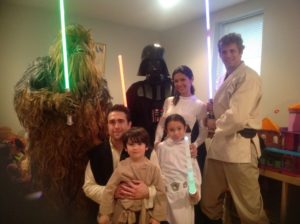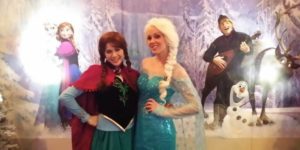Disney character knockoffs come a dime a dozen, but are they legal? A recent ruling took on this issue.
In the spring of 2016, Disney Enterprises, Inc. and its affiliated entities sued a small party services business called Characters for Hire (“CFH”) for presenting Disney character knockoffs to the public. The entertainment conglomerate alleged that CFH violated its copyright and trademark rights. But the plaintiff was up to the challenge.
Disney—along with subsidiaries Marvel Characters, Inc., Lucas Film Ltd., LLC, and Lucas Entertainment Company Ltd., LLC (collectively, “Disney”)—moved for summary judgment, meaning a ruling from the civil court judge without a full trial. CFH, for its part, also sought summary judgment on several of Disney’s claims in this highly watched federal case. In true David vs. Goliath fashion, CFH prevailed in essentially knocking out Disney’s claims for trademark infringement, unfair competition, and false designation.
What Constitutes a Knockoff?
The undisputed facts of the case are rather simple. CFH is a small company in New York that hires paid actors to dress in costumes for local private parties and corporate events. Among the characters it offers for these purposes are what appear to be Disney character knockoffs.
For example, CFH offers characters that look very similar to Disney’s Captain America, Hulk, and Iron Man, but calls those characters “The Soldier,” “Big Green Guy,” and “Man of Iron.” CFH has made similar tweaks with other characters to which Disney owns the rights, including numerous characters from Frozen and the Star Wars movies. As part of its defense against copyright infringement, CFH cited the public domain nature of centuries-old folklore and fairy tale characters like Thor and Cinderella.


As for trademarks, CFH insisted that there was no possibility of consumers being confused over the source of the entertainment—the lynchpin of any trademark infringement action. Disney, on the other hand, alleged that any presentation of its famous characters that was not up to their standards could compromise the branding of these Disney “stars.” But in August of 2018, the judge threw out many of the trademark claims (ruling in favor of CFH) and Disney’s motion for summary judgment was denied.
A Snapshot of the Precedent
Many outside observers thought this should be a slam-dunk trademark infringement action for Disney. Unfortunately for the Mouse House, that wasn’t the case. In arriving at its decision, the court turned to the eight-factor test set forth in Polaroid Corp. v. Polarad Elecs. Corp. Three factors stood out for Disney’s case against CFH.
First was the “similarity of the marks”: Disney argued that CFH’s costumes were virtually identical to its trademarked characters. The court noted that, despite the similar costumes, CFH’s website and advertising was not similar to Disney’s trademarked assets. Instead, CFH went to great lengths to use different fonts and coloring in the various logos. It also noted CFH’s practice of giving its characters non-Disney names.
Second was the “proximity of products”: the court found vast differences in the litigants’ business models that reduced the likelihood of consumer confusion. For example, Disney only presents its live characters at its theme parks, while CFH offers the alleged Disney character knockoffs solely at private parties and corporate events in New York.
Third was the likelihood of the trademark registrant “bridging the gap” to become directly competitive with the other business: Disney presented no evidence that it intended to enter the private entertainment business in New York or elsewhere.
In the end, the court found that the Polaroid factors weighed in favor of CFH and thus granted the defendant’s motion for summary judgment on Disney’s trademark infringement claim.
Lessons From CFH’s Disney Character Knockoffs
The court’s ruling is an important lesson for companies seeking to protect their intellectual property rights. Ultimately, the well-reasoned ruling showed that Disney was simply ill-prepared to make the multi-pronged, factual argument it needed to prevent unrelated entities from exploiting Disney characters.
One of the principal lessons in this case is that if you’re going to bring a trademark infringement action, you must be prepared to present enough evidence that will satisfy the Polaroid test. Disney largely failed in that regard. The eight-factor analysis is intricate and takes preparation and planning long before a case is filed.
With the right legal strategy in place, businesses can protect their intellectual assets from similar instances of product imitation. Don’t leave your products open for copycats to steal. Give me a call to discuss protecting your intellectual property today.
Image sources: #1. CFH Yelp page: https://www.yelp.com/biz_photos/characters-for-hire-new-york-2?select=f7RENhsn-g8ZRCL37iJajw). #2: https://insidethemagic.net/2017/10/disney-fights-back-unlicensed-star-wars-frozen-characters-new-york-based-company/)


